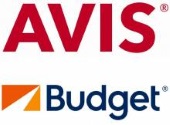 |
|  |
|
ABSTRACT New Tool – Applying A Production Cultural Biorhythm in the DMAIC ProcessIndustry: Manufacturing Keywords: Production Cultural Biorhythm, DMAIC, Bottleneck Level: Intermediate LinkedIn: linkedin.com/in/karen-schmahl-1935b62b Co-Speaker: Yes The Production Cultural Biorhythm (PCB) is a newly introduced tool which can be effectively used in many aspects of continuous improvement programs. The PCB provides a detailed depiction of daily variation in a process metric. By collecting data in small time increments, typically 5-minute intervals, and averaging the data over the time, a daily profiles can be generated for a process. Profiles are typically generated for production output, but have also depicted energy usage, process yield and equipment effectiveness. The profiles of production operations and metrics developed considering the PCB can be used effectively in all phases of Define, Measure, Analyze, Implement and Control (DMAIC) approach to improving processes. In the Define phase, the PCB highlights the inefficient use of a critical resource with modeling of the Real Output Profile (ROP) for comparison to the Digital Ideal Output Profile (DIOP). A Measure of the inefficiency in terms of production output rate or process yield can be established using the ratio, V, of actual to ideal as a metric. Analysis of the profile provides direction for cause-and-effect analysis by highlighting time increments where a process is insufficient and allows identification of time selective projects. The verification of effectiveness in the Implement stage can be accomplished with comparison of the new ROP and V with the previous. The PCB also has potential in the Control phase with continued monitoring of the ROP over time ensuring the sustainability of the changes. The presentation depicts an actual application of the use of the PCB/DMAIC approach in improving a bottleneck process where the rate of production output improved by approximately 29%. | BIOGRAPHY Dr. Karen E. SchmahlProfessor of Practice in Engineering Management (retired), Florida International University, Fairfield, OH, USA Karen E. Schmahl, Ph.D. is a recently retired Professor of Practice of the Engineering Management program at Florida International University. Teaching and research areas focused on quality management/engineering and engineering economic analysis. Her degrees are in Industrial Engineering with bachelor’s and master’s from Texas A&M and Ph.D. from University of Cincinnati. She shared over twenty years industry experience with her students. Over ten years were spent in the aerospace industry, most notably at GE Aircraft Engines with positions supporting manufacturing and technology modernization projects. Prior to joining FIU in 2013, Dr. Schmahl spent 10 years as an independent consultant focusing on continuous improvement projects, providing training in quality engineering and blackbelt statistics, and performing AS9100 system assessments. She has held registrations/certifications as a Professional Engineer (Ohio), ASQ Certified Six Sigma Blackbelt, ASQ Certified Quality Engineer, and ASQ Certified Manager of Organizational Excellence. Dr. Schmahl has received numerous awards including an ASEE Outstanding Teaching Award and an Ohio Society of Professional Engineers Achievement Award. She holds two patents and has had numerous publications. |



































































































